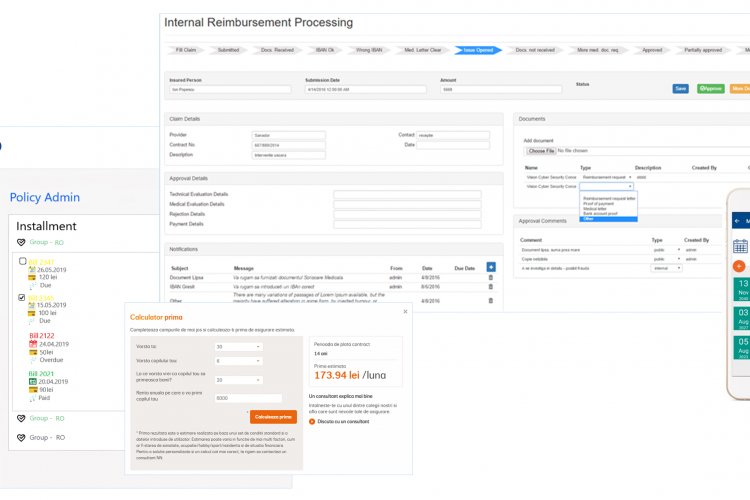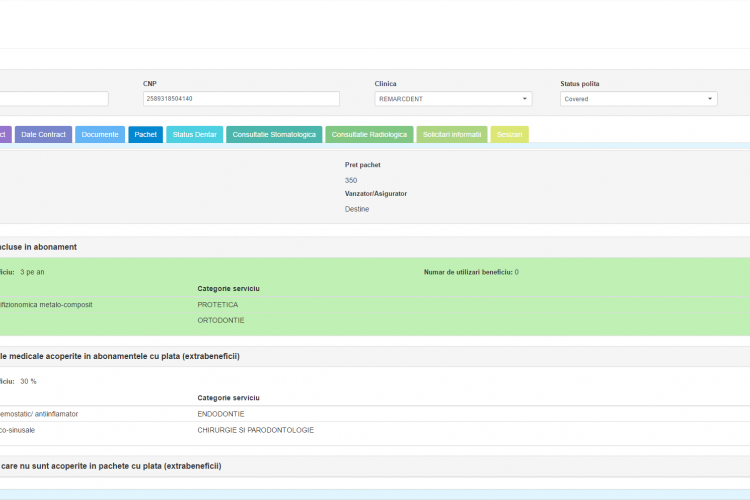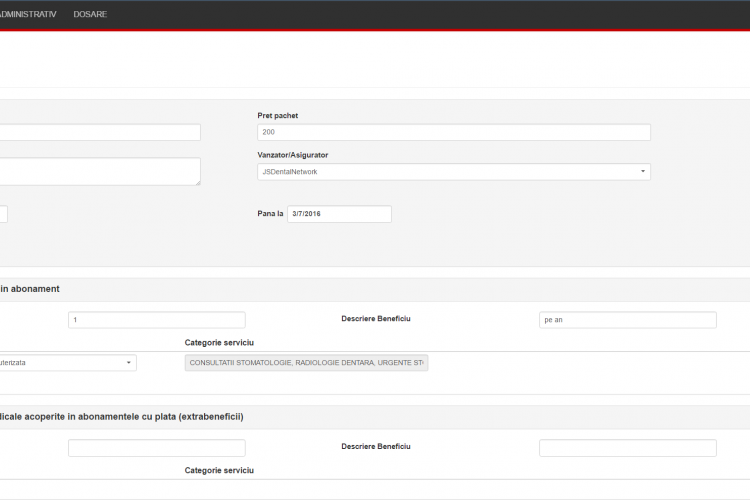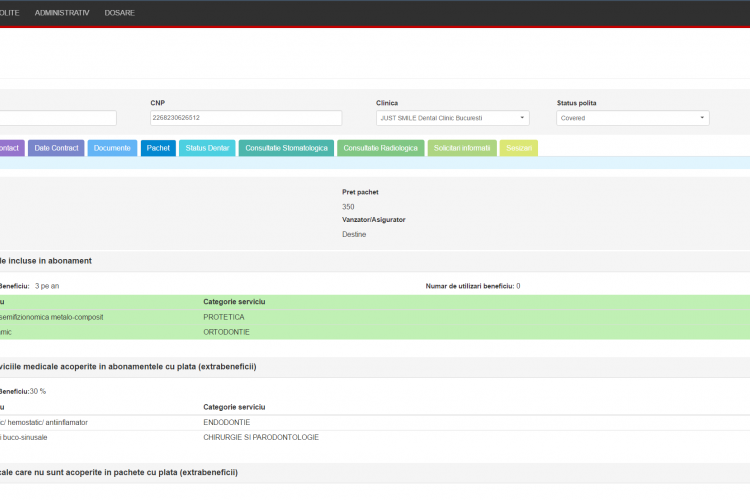Dental Insurance front and back office
The platform enable the customer company to design an end-to-end digital insurance experience through a complete set of integrated features which serves as a full-service insurance for customers to access all services.
The project was carried out for a dental insurance provider based in Bucharest, Romania. As part of the financial services sector, the organization aimed to modernize its back office operations to improve claim accuracy, speed, and overall service delivery to customers and dental care providers.
Initial Challenges
Dental insurance providers face operational inefficiencies rooted in outdated, manual workflows. In this case, the client struggled with claim processing delays, frequent errors, and limited visibility into operational performance. These issues led to increased costs, slower reimbursements, and strained relationships with customers and dental service providers.
The absence of centralized data and process automation made daily tasks time-consuming and error-prone. Claims were processed manually, with little transparency or oversight, causing bottlenecks and missed deadlines. Teams lacked real-time tracking tools, while compliance reporting was handled through complex spreadsheets. These challenges impacted internal productivity, customer satisfaction, and the provider's ability to scale efficiently in a highly regulated environment.
The Smart Solution
To address these problems, the company implemented a specialized Dental Insurance Back Office software platform. The solution centralized claims data and automated the processing workflow, significantly reducing human error and approval time. Real-time tracking and analytics provided teams with full visibility into claim statuses, while built-in compliance tools ensured accurate and timely reporting. Communication across providers, insurers, and customers improved through integrated messaging tools, helping resolve issues faster and more transparently. The platform also enabled staff to shift focus from manual data entry to higher-value tasks, creating a more responsive and productive work environment.
Implementation Insights
As with many digital transitions, the project encountered initial resistance due to the complexity of existing workflows and concerns about adopting a new system. The implementation strategy emphasized process alignment, ensuring that automation was configured to match the real-world needs of each department. Integration with existing systems was prioritized to avoid workflow disruptions. Change management and user training were key enablers, giving employees the confidence to adopt new tools quickly. Real-time feedback from users helped refine the platform post-deployment, improving usability and ensuring long-term effectiveness. Through close collaboration between operations, IT, and compliance teams, the implementation stayed on track and delivered impactful results.
Results & Impact
The implementation of the Dental Insurance Back Office platform led to measurable improvements across operations, efficiency, and customer satisfaction.
Quantitative Results:
- Up to 50% reduction in claims processing time, accelerating reimbursements and cash flow
- 40% decrease in error rates, increasing accuracy and regulatory compliance
- Significant improvements in staff productivity, enabling a shift toward higher-value work
- Enhanced real-time tracking and transparency for more informed decision-making
- Improved communication and faster response times with customers and providers
Qualitative Results:
- Positive feedback from users regarding ease of use and clarity
- Fast onboarding and smooth adoption due to intuitive design
- Greater operational agility and readiness for regulatory audits
- Strengthened trust among stakeholders through improved service reliability
These outcomes supported business growth, reduced costs, and established a more agile and compliant back office environment ready to meet future challenges.
Lessons Learned & Key Takeaways
Several key lessons emerged from the implementation that now inform the company’s broader digital strategy. First, automation must be grounded in a clear understanding of existing workflows to deliver meaningful results. Centralizing data was essential not just for operational efficiency but also for meeting compliance standards. Strong change management and targeted user training played a critical role in adoption, while continuous user feedback helped refine the system after launch. Cross-functional collaboration between departments ensured that the platform supported both business goals and regulatory obligations. Ultimately, the project confirmed that successful back office transformation depends on aligning technology with people and processes to unlock long-term value.






